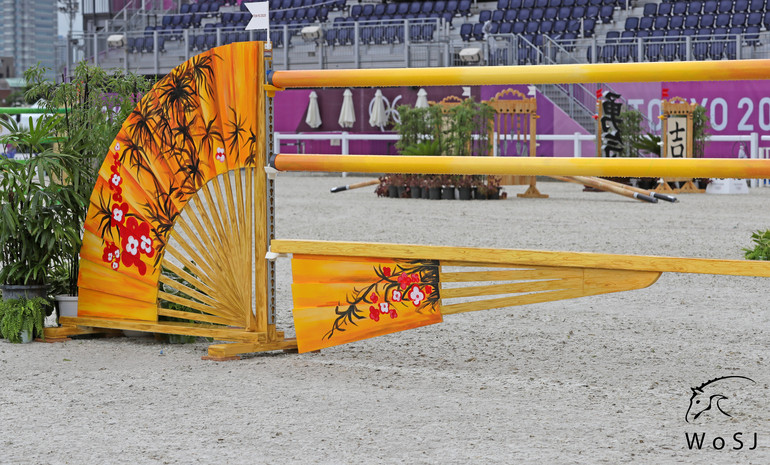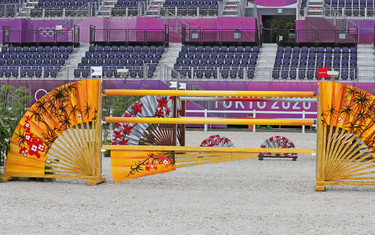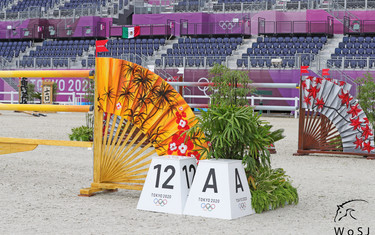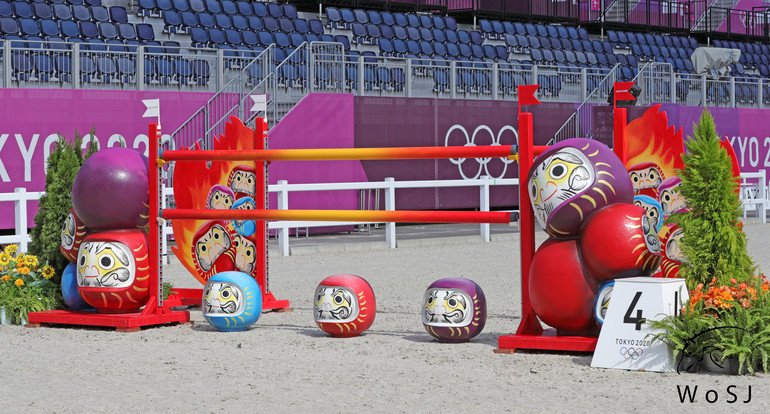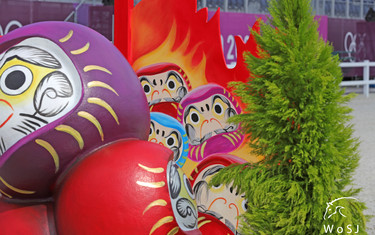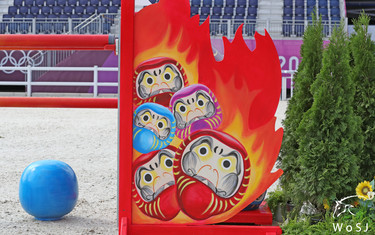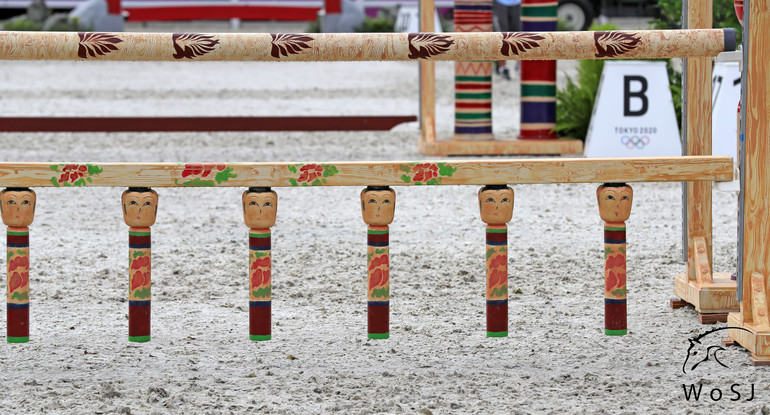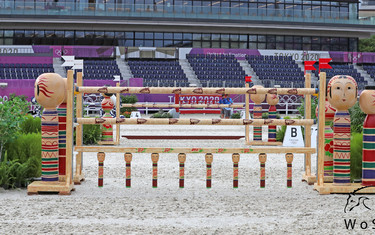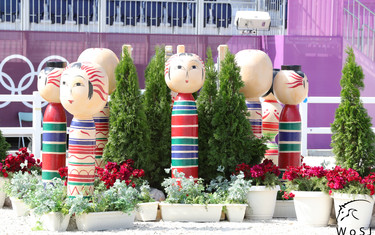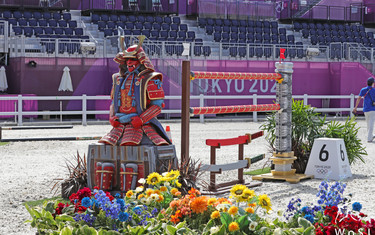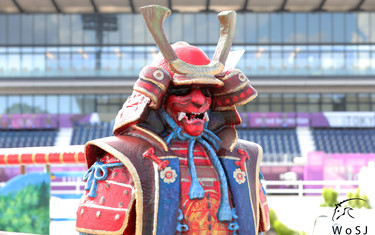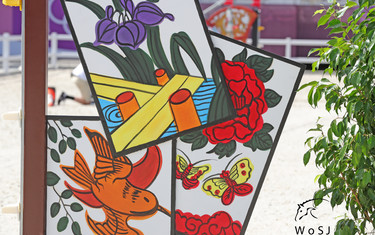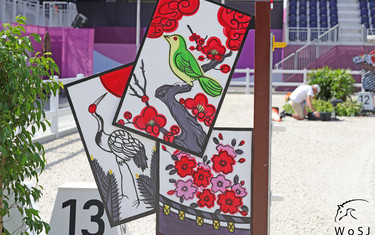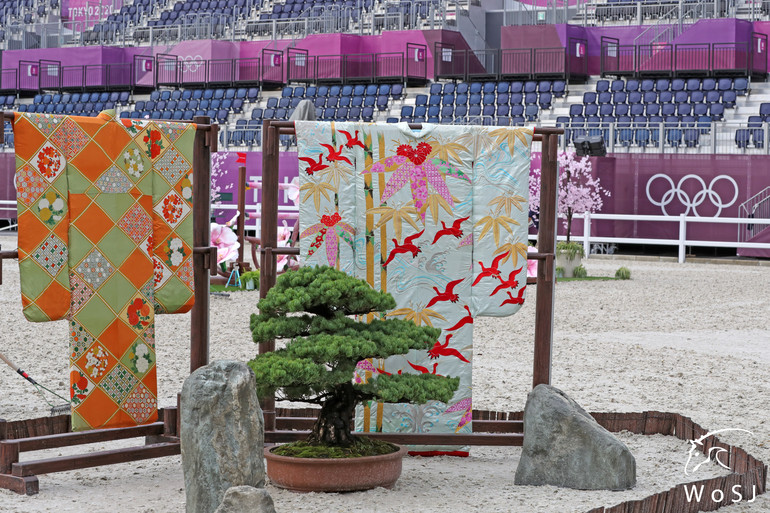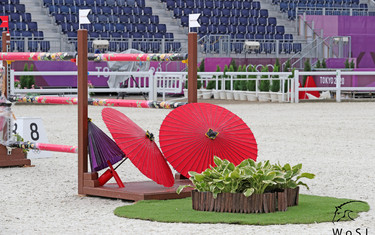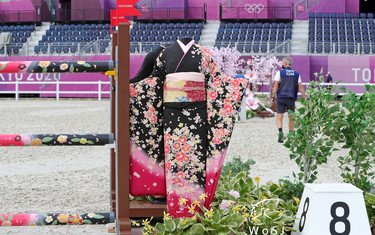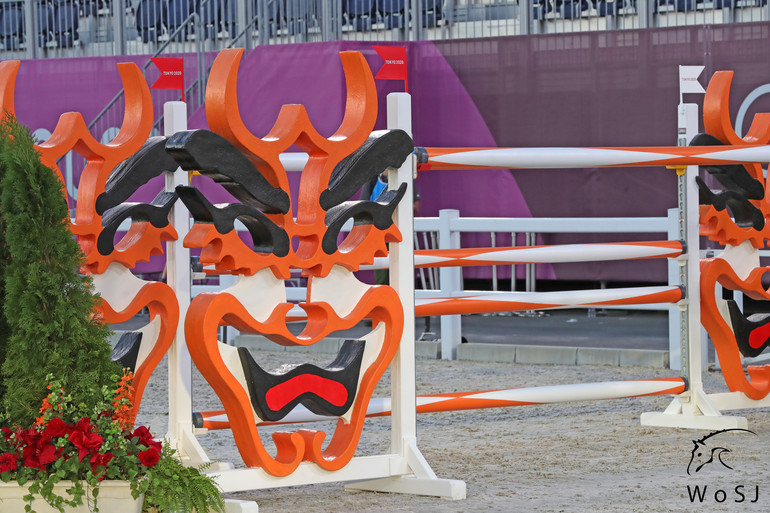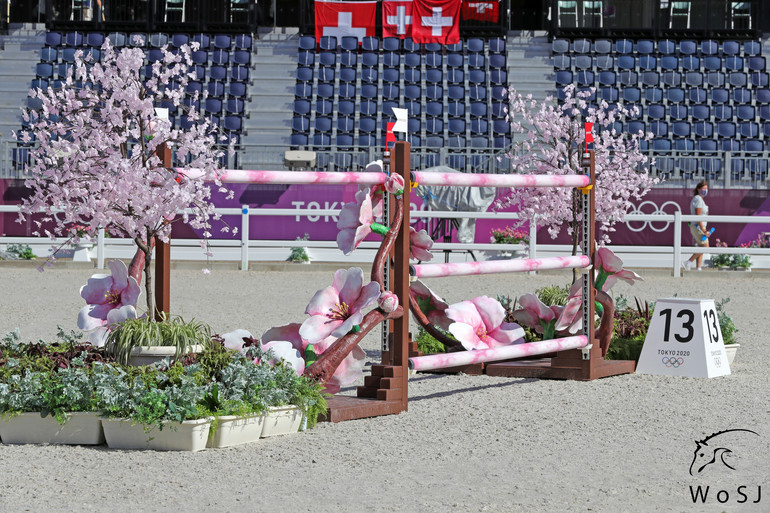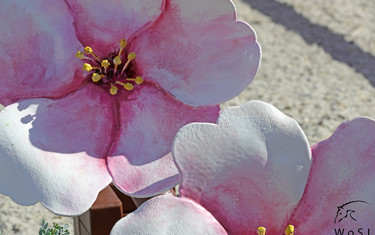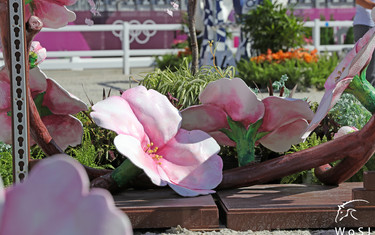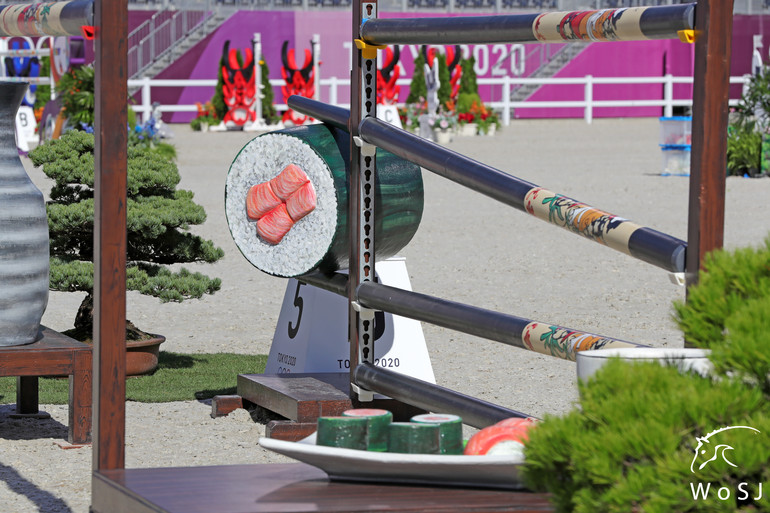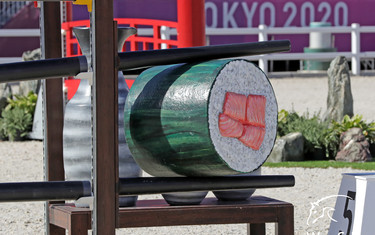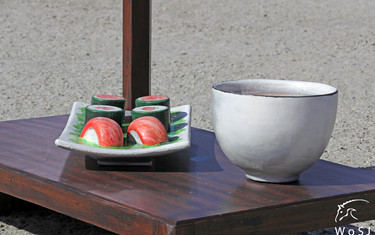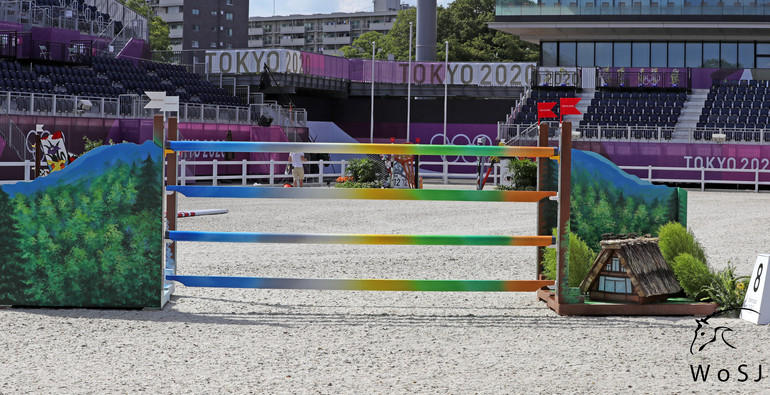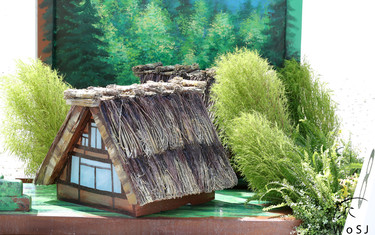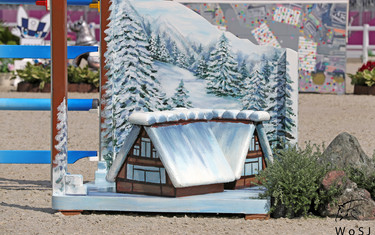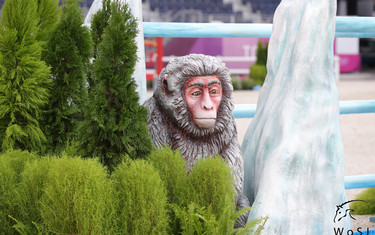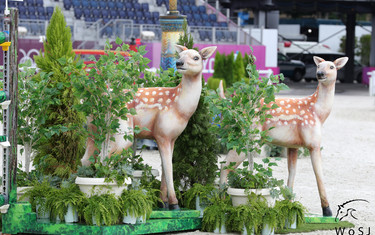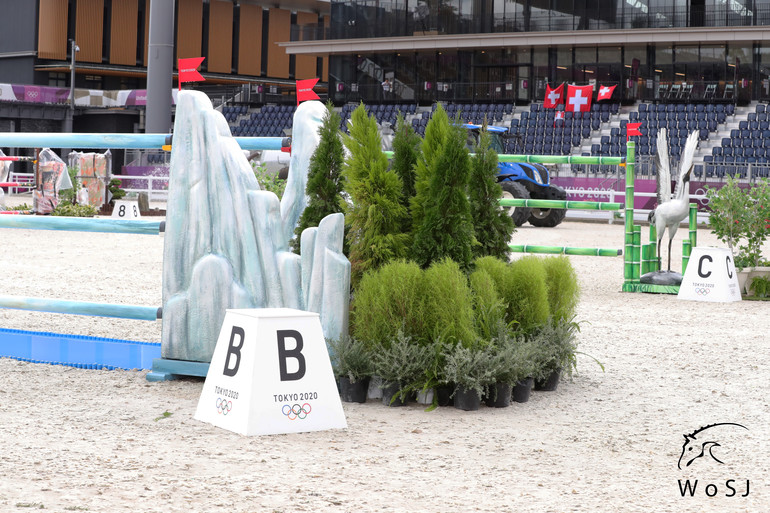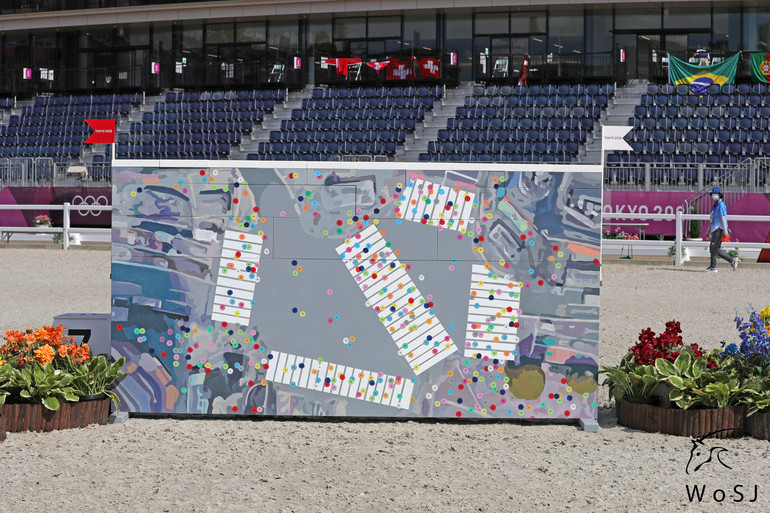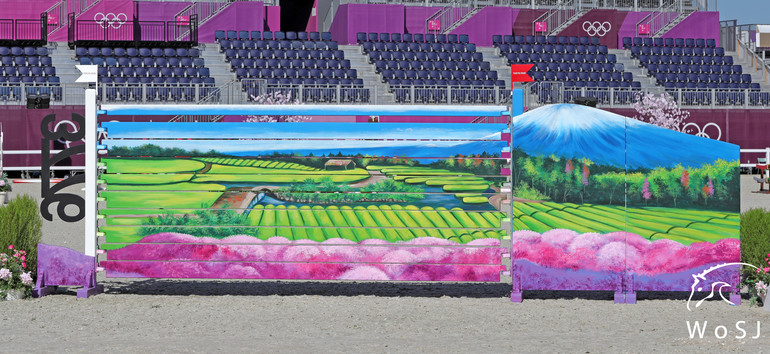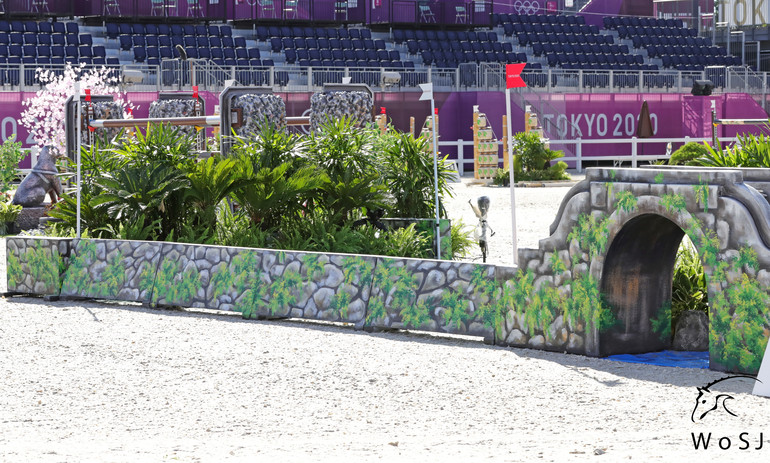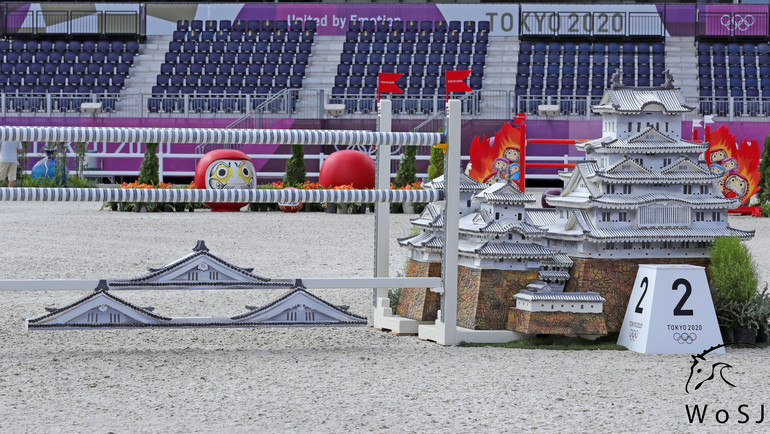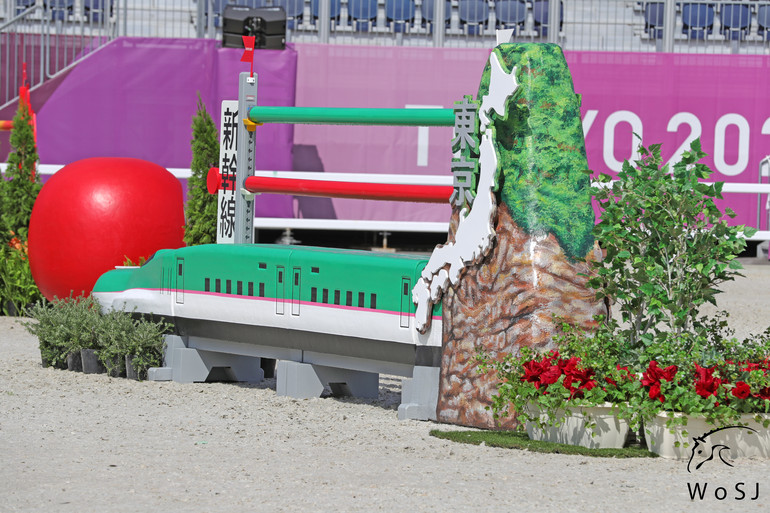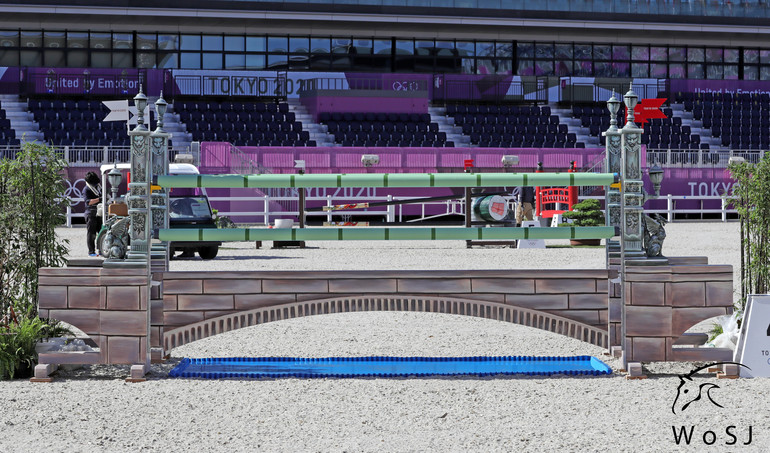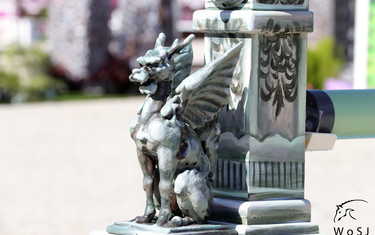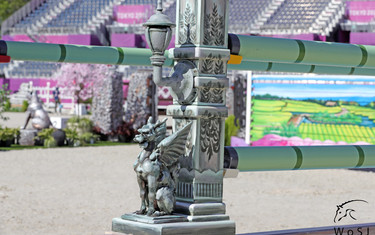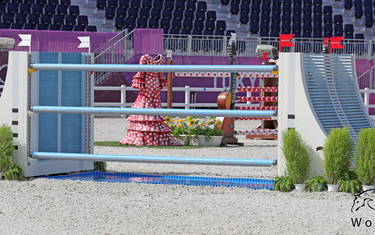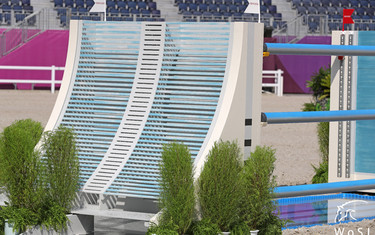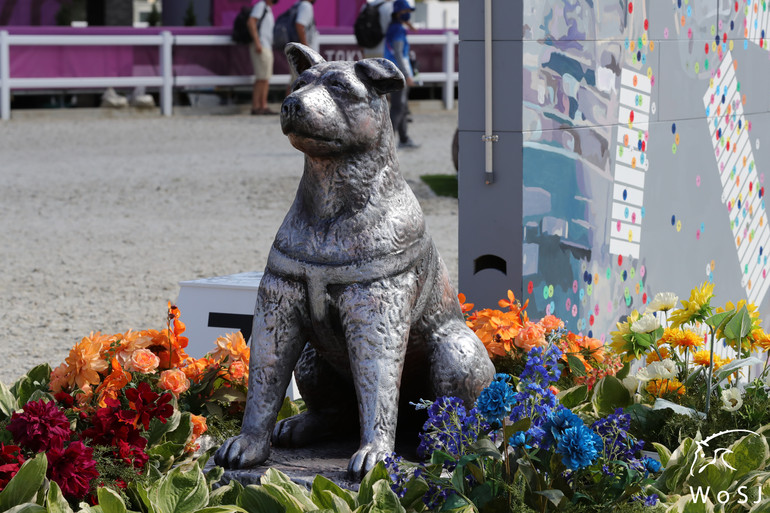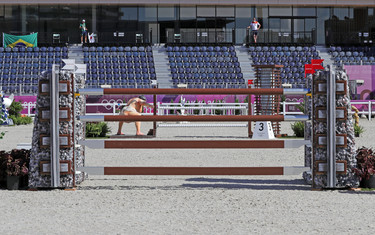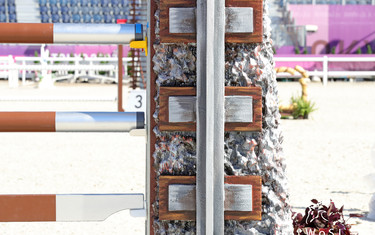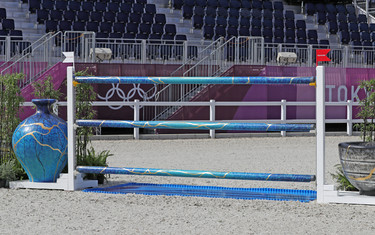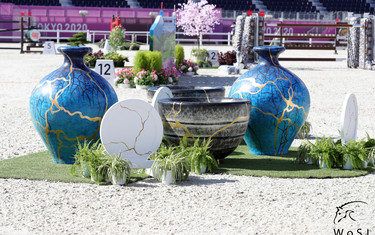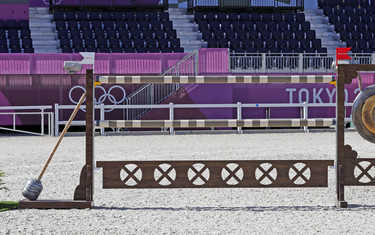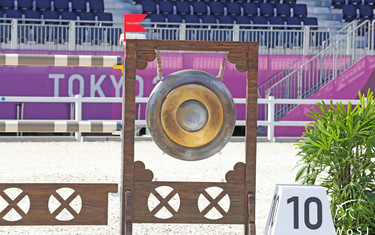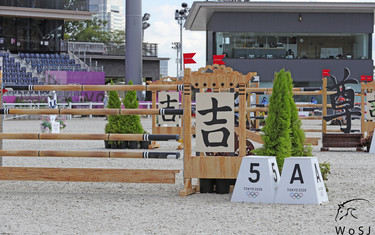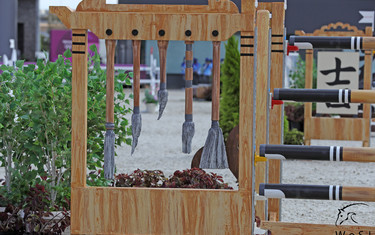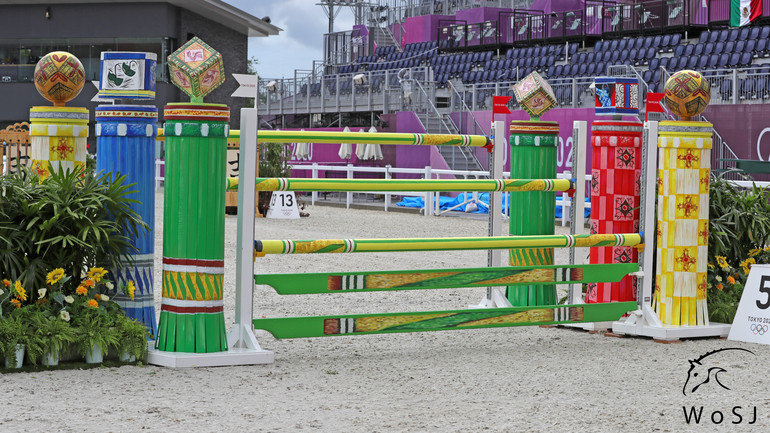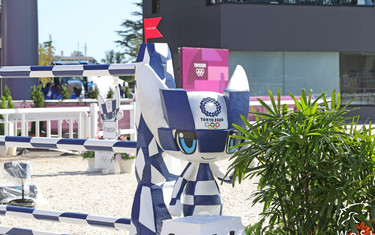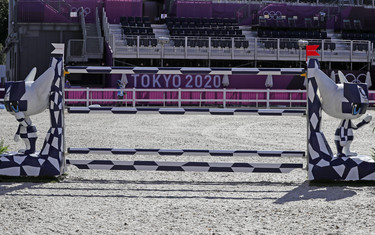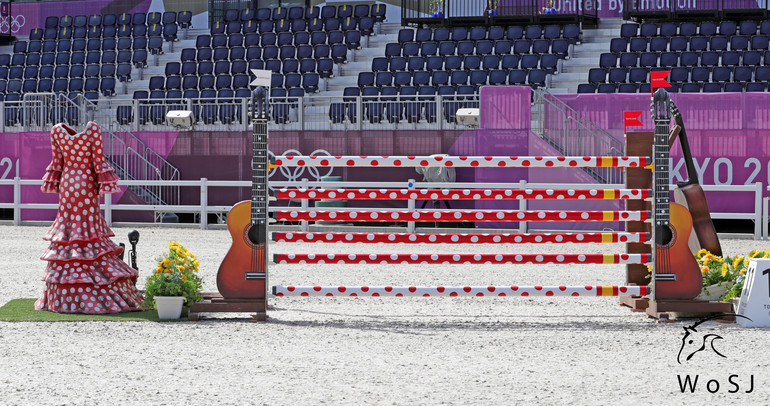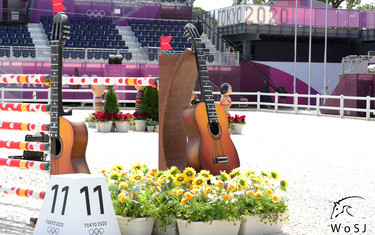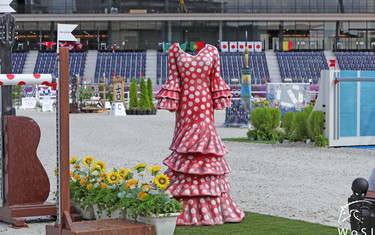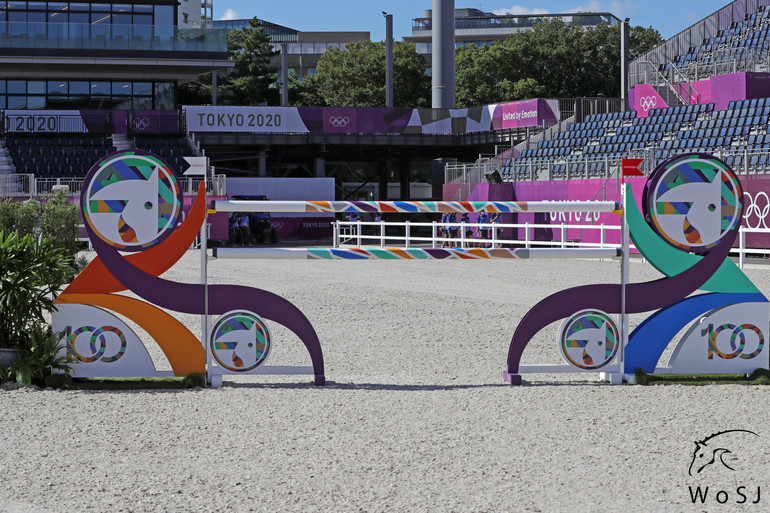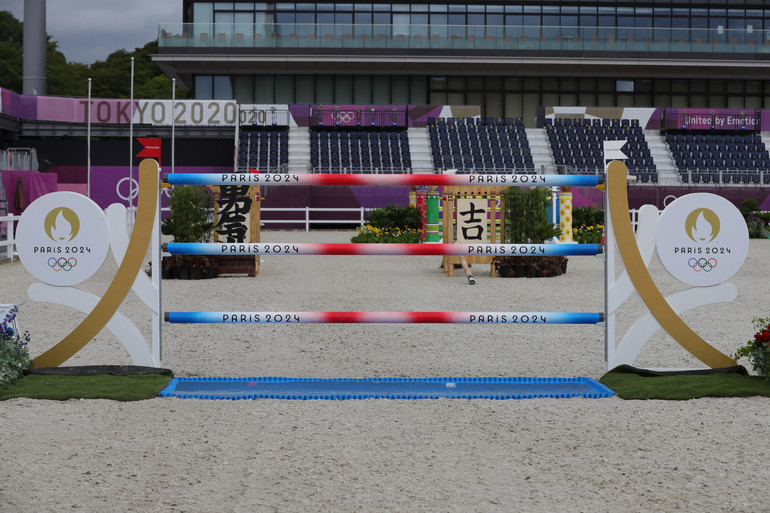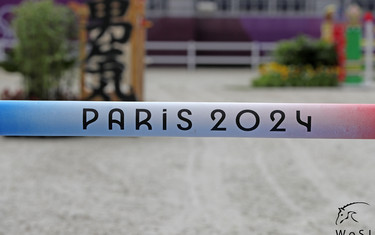For the Tokyo Olympics, Santiago Varela and his team had produced some seriously stunning fences. Varela used nine designers and from the 112 fences that were on the drawing board, 57 were produced – most of which reflected the host nation's culture, while some had a nod to past and future Olympics, to the FEI or to the course designer’s home country.
On the first day of the Games, we did a photo special from the jumps that were used for the individual qualifier – click in here to have a look – and today we continue to have a closer look at the fantastic fence material in Tokyo.
Which fence better to open this photo special than the Japanese fans?
All photos © Jenny Abrahamsson for World of Showjumping.
A Daruma doll is a hollow, round, Japanese traditional doll modeled after Bodhidharma, the founder of the Zen tradition of Buddhism. Daruma has a design that is rich in symbolism and is regarded more as a talisman of good luck to the Japanese.
The Kokeshi are traditional Japanese dolls, originally crafted in Tokohu, a region in the North of Japan. Those considered to be the most traditional are called Naruko, and they are crafted in Miyagi. The origin of the dolls dates back to the 17th century.
They are handmade and crafted in wood from either the dark cherry or the lighter mizuki tree. The original Kokeshi dolls were crafted following a simple design and had an elongated shape mixed with subtle colours. As years have passed, more designs have appeared, always keeping one main characteristic in common, the lack of arms and legs. The body is usually decorated with floral motifs or with the appearance of a kimono, despite this, there are many different kinds, with different sizes and patterns.
The dolls are considered to be both decorative and amulets for good luck.
The Japanese kimono is one of the world's instantly recognizable traditional garments. The word kimono literally means "clothing", and up until the mid 19th century it was the form of dress worn by everyone in Japan. This began to change slowly with the import of suits, dresses and other western fashion.
Kabuki is a Japanese theatrical genre, where we can see a combination of dialogue, dance and
music. It is considered to be one of the most ancient forms of Japanese theatre, thought to have originated in the very early Edo period.
Noh and Kabuki are still performed today and are part of the UNESCO Representative List of the Intangible Cultural Heritage of Humanity.
The cherry tree flower is seen as a metaphor of life, which is considered to be beautiful but at the same ephemeral.
Cherry trees (Sakura Zensen) start blooming during March, the flowering front (Kaika Zensen) moves from Okinawa towards the north of the country, ending with the flowering of the cherry trees up in Hokkaidō during the month of May.
Japan’s Meteorology Office annually predict the pattern the flowering front will follow so that
everybody is able to search and find which will be the optimal locations to watch the flowering of the cherry trees. This is actually really important, as the cherry tree flower only lasts for one week, something that matches really well with the traditional Japanese spirit and ideology based upon the shortness and continuous movement of life.
The historical village of Shirakawago (白川郷), Shogawa Valley. Declared a UNESCO world heritage site in 1995, the Shirakawago and neighboring Gokayama are famous for their traditional gassho-zukuri farmhouses, some of which are more than 250 years old.
Rumours speak of it as the busiest intersection in the world (and definitely in Japan), the Shibuya Crossing in Tokyo is like a giant beating heart, sending people in all directions with every pulsing light change. Hundreds of people – and at peak times reaching the estimated quantity of 3000 people – cross at a time, coming from all directions at once, yet still managing to dodge each other with a practiced agility.
Mount Fuji is located between Yamanashi and Shizuoka. It is an active volcano with a height of 3.776 metres, included in the list of Patrimony of Humanity, but above all, it is the most emblematic mountain of all of Japan.
Shikinaen (識名園) was constructed at the end of the 18th century as the second residence for the Ryukyu kings. Its features are beautiful, relatively simple, wooden palace buildings in Okinawan style, red tile roofs and a spacious Japanese style landscape garden with a central pond. While the garden is designed in a style seen elsewhere in Japan, the architecture and flora give Shikinaen a uniquely Okinawan flavour.
In 2000, Shikinaen was among those which were added to the list of UNESCO World Heritage Sites under the title Gusuku Sites and Related Properties of the Kingdom of Ryukyu.
Himeji-jo is the finest surviving example of early 17th-century Japanese castle architecture. It is located in Himeji City, in the Hyogo Prefecture, an area that has been an important transportation hub in West Japan since ancient times. In 1993, the castle was declared a National Treasure and UNESCO World Heritage Site.
The castle property, situated on a hill summit in the central part of the Harima Plain, covers 107 hectares and comprises eighty-two buildings.
Before trains and railway systems arrived in Japan, one of the main routes in Japan was the Tokaido Route, which connects Kyoto (Capital of the Empire) and Osaka with Edo (a.k.a. Tokyo nowadays). As a tribute to the Olympic Games celebrated in 1964, Japan developed something new, the Sinkansen or Bullet Train.
For 2020, a new train, with a more dynamic design and higher performance was launched – the Shinkansen Supreme.
Nihonbashi is a famous bridge in Tokyo, that has given the business neighbourhood it is located in its name. The bridge has linked two sides of the Nihonbashi River at this site since the 17th century. The first wooden bridge was completed in 1603. The current bridge, designed by Tsumaki Yorinaka and constructed of stone on a steel frame, dates from 1911.
Hidesaburo Ueno – professor at the University of Tokyo – and his Akita puppy Hachikō (10 November 1923 – 8 March 1935) became inseparable. Hachikō would meet Ueno at Shibuya Station every day after his commute home. This routine lasted for two years, until Ueno died of a cerebral haemorrhage. From then until his death on March 8, 1935, Hachikō would return to Shibuya Station every day to await Ueno's return.
In April 1934, a bronze statue based in his likeness sculpted by Teru Ando was erected at Shibuya Station.
When Hachiko died, he was buried next to his owner at the Aoyama Cemetery in Tokyo.
This story was taken to the cinema in 1987 by the Japanese filmmaker Seijiro Kojama; the film, in black and white, is titled Hachiko Monogatari (The story of Hachiko). In 2009 a remake was made in the United States directed by Lasse Hallström under the title “Hachi: A Dog’s Tale”.
Tanabata (Japanese: たなばた or 七夕, meaning "Evening of the seventh"), also known as the Star Festival (星祭り, Hoshi matsuri), is a Japanese festival originating from the Chinese Qixi Festival. It celebrates the meeting of the deities Orihime and Hikoboshi.
The date of Tanabata varies by region of the country, but the first festivities begin on 7 July of the Gregorian calendar. The celebration is held at various days between July and August.
This jump is a tribute to course designer Santiago Varela's home country, Spain.



